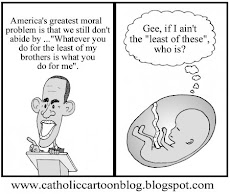Charles Murray is one of the most influential and controversial social scientists alive today. His book, Losing Ground: American Social Policy 1950-1980, was very influential in the highly successful welfare reforms undertaken in the mid-90s in the US during a period of divided government while Bill Clinton was president. His book, The Bell Curve: Intelligence and Class Structure in American Life, argued that intelligence is a better predictor of future success than socio-economic status and education level. Much of Murray's work challenges the conventional wisdom of modern progressives and liberals and defends the truth of traditional, conventional wisdom. As a rather extreme libertarian, rather than a social conservative, Murray is an interesting writer because he comes to so many conclusions that support the conservative case for traditional family structure as the basis of a healthy society even though that is not a central tenet of his philosophical belief system. It appears to be a matter of following the logical implications of the data he studies in his case. He is divorced and re-married and not particularly religious, although he attends Quaker meetings with his second wife.
Murray's new book, Coming Apart: The State of White America 1960-2010 (Random House, 2012), is a fascinating look at the social revolution of the past half-century. The disastrous effects of the attempts to impose a European-style welfare state on America beginning with the Great Society programs of the 1960s on the black family have been well-documented. But what has been going on in white America during this period? Were the effects of welfare statism on black families different from their effects on white families or were those effects merely delayed slightly?
Murray also argues that what he calls "the American project" has involved the attempt to build a nation without a class structure and that this effort was in many ways largely successful up until the 1960s, that is, for a period of almost two centuries. His diagnoses is that, since the 1960s, however, a growing economic chasm has been hardening into a genuine class divide in America. The deepest divides in America today are not racial but economic and for the first time the nation is divided into what may become permanent classes.
Murray documents the emergence of a new upper class which lives in a geographic and cultural bubble isolated from the rest of society and, in particular, from a new lower class. Up until recently, most Americans, regardless of income levels, thought of themselves as middle class. Men holding menial jobs who supported their families were accorded high social status; their lives and efforts were regarded as making a genuine difference both by themselves and by others. These men have become irrelevant and unnecessary in the welfare state and their social status has plummeted.
Murray documents the rise of a new lower class of people in which marriage has almost disappeared as a way of life. In his white, urban neighbourhood (called Fishtown) the percentage of the population who married declined from 85 to 50% between 1960 and 2010. The percentage who never married rose from 8-25% and the percentage of divorced people rose from 5-35%. The percentage in self-reported "very happy" marriages dropped from 68-55%. The percentage of children living with a single, divorced or separated parent rose from 2-22%. One particularly startling statistic was that the percentage of children in Fishtown living with both biological parents dropped in this period from 95-35%.
When it comes to young men (aged 30-49) and employment the trend is clearly away from full-time employment and toward fewer hours worked per week. Marriage and work habits are closely correlated. In effect, the government is taking over the economic role of the father, which results in arrested development of young males, who simply do not grow up.
Prior to the 1960s, a young woman in Fishtown got a boyfriend, got pregnant and got married. Now, marriage is optional and less and less frequent. One telling comment from a resident of Fishtown was by an elderly woman who observed that many of the women trying to raise children had a live-in boyfriend who was more like an extra son to care for than anything else. A new class is emerging that is not middle class and never will be; it is something not adequately described by the phrase "working poor." It is dysfunctional.
At the other end of the scale, however, the last half-century has witnessed the growth of a tiny, powerful, wealthy, influential upper portion of the upper class, which is increasingly isolated in their daily lives from the rest of America. Beginning in the 1950s universities like Harvard began to admit mostly the brightest students from an ever-growing pool of eager applicants. Today, elite colleges admit students whose test scores place them in the top quadrant of the population for intelligence. Since marriage partners are usually found in such settings, the children of this class will inherit an IQ on average in between that of their parents. And, since these children will grow up amid privilege, they will gain admission to elite colleges and repeat the process. A third generation is now going through this cycle.
One of the most fascinating parts of the book is Murray's description of the insular nature of the lives of this group. They have, for the most part, never held a job that made a body part hurt at the end of a work day. They live in enclaves of privilege among people of their own class. They often attend private schools and share a number of prejudices and incontrovertible beliefs. They are thin, fit and do not smoke. They have never owned a pick up truck and they often work in the high-paying jobs created by the computer revolution and are all are some sort of "symbolic interaction," meaning media, law, journalism, university teaching, management, consulting, finance, etc.
The top tier of this new upper class is concentrated in four cities: Washington, DC, New York, Los Angeles and San Francisco. Interestingly, this group has very low divorce rates, very low illegitimacy rates and appear to be immune from many of the trends afflicting the emerging welfare class. Although, this is good news in some ways, it also highlights the insularity of their lives. But why is insularity a problem? As Murray points out, if the delivery truck driver in Omaha fails to understand the daily lives of Wall St. stockbrokers, it doesn't matter. But if the presidents of major movie studios, those who make laws regarding media standards, those who make educational policy etc. do not understand the daily lives of those who are affected by their decisions, it is significant.
Murray wonders whether the members of the new upper class have any moral core or if they are essentially "hollow." The question arises because the members of this class oddly refuse to "preach what they practice." Even though getting married and staying married, working hard and obeying the law are lifestyle habits which have made them successful, they are unaccountably reticent to "impose their values" on anyone else. Why? Murray has no answer.
Also, the recent rise in unseemly behaviour from this group is disconcerting. For example, grossly inflated bonuses paid to CEO's of major corporations and unethical behaviour leading up to the 2008 crash on Wall St. and the whole subprime mortgage scandal raise the question of whether this group can be trusted with power. Yet, who is available to restrain them when they move effortlessly back and forth between government and corporations and seem to float above both.
Murray is neither optimistic nor pessimistic, but realistic. He admits the necessity of religious belief in order for a free people to survive in the long run but is not sure if a religious revival will come. He speculates that as Europe goes bankrupt the unnaturalness and impossibility of the welfare state will eventually come to be appreciated. He is stern in his insistence that social capital has been severely diminished over the past half-century and the effects are already visible. Like all libertarians and conservatives his greatest fear is that the decline of religion, morality and the family will erode social capital to the point that government will have to become totalitarian just to maintain some semblance of order and structure in daily life.
There is a lot in this book that I have not been able to mention and certainly much to ponder. As I look over Murray's shoulder as he analyzes his data and formulates his hypotheses, my conclusion is that the evidence is incontrovertible that nothing but another Great Awakening can save America from a long, slow decline into anarchy and state control of more and more of the daily lives of her people. Religious revival is the future or there is no happy future. This is not the conclusion of a fundamentalist preacher, but of a sober and conflicted social scientist. This ought to give those on all sides of the debate food for thought.
Cross-posted at the Bayview Review.
Subscribe to:
Post Comments (Atom)





No comments:
Post a Comment